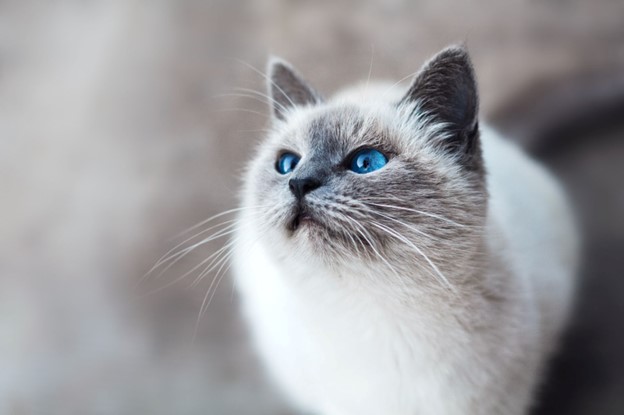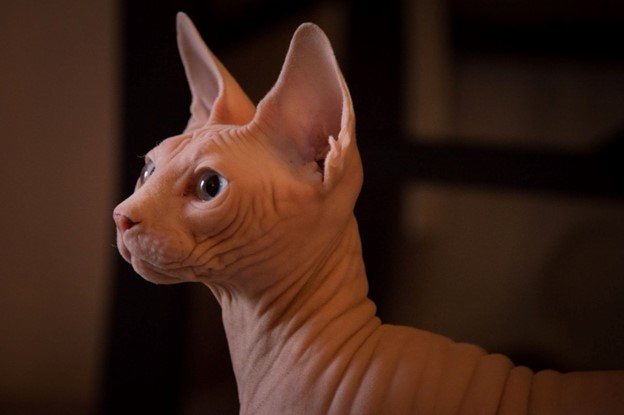Do you sneeze, get hives, or do your eyes get teary and red whenever you are close to a cat? Maybe it’s a family member (like a child) who has been having never-ending flu symptoms ever since you adopted a cat. You (or your family member) could be allergic to cats. It is not strange. As many as three in ten people in the US have pet allergies.
If you are allergic to cats, you don’t have to deny yourself or your family much-needed pet affection. We’ll help you find a solution. Here is a list of the best hypoallergenic cat breeds to adopt. But first, let’s talk about pet allergies and hypoallergenic cats.

Photo by Mikhail Vasilyev on Unsplash
What causes pet allergies, and how can you tell?
According to the Asthma and Allergy Foundation, three in 10 Americans suffer from pet allergies. Cat allergies are twice as common as dog allergies. It is not the cat smell that sets you off. The cat releases allergens that make you a sniffling mess.
They produce a protein – Fel D1 – found in cat saliva, urine, and dander (flakes of dried skin) that sets your immune system on fire, thus an allergic reaction.
Common symptoms of cat allergies are:
- Irritation of the respiratory system (coughing, sneezing, sniffles, wheezing)
- Red, teary and itchy eyes.
- Hives or rashes, especially around the chest and face.
- Redness of the skin where the cat touched or licked.
- Severe asthma flare-ups for people with allergic asthma when close to or in contact with cats.
If you suspect you have a cat allergy, consult a doctor and stay away from the cats for a while. If the symptoms subside, chances are high you could have a cat allergy. If that’s the case, and you love cats, there are several options you can explore including the following:
- Reducing your exposure to cats. (As a cat lover, this might be an uphill task.)
- Beware and keep your distance from visitors who might own cats. (Yet another nearly-impossible task.)
- Take allergy medication regularly. (Seems absurd, but it could work.)
A better option would be to learn more about different cat breeds and find hypoallergenic cats that suit your personality and lifestyle.
Hypoallergenic cats – what are they?
They are breeds of domestic felines known to release lower levels of allergens. No cat is 100 percent hypoallergenic. But researchers have singled out these breeds for having lower levels of the Fel D1 protein. Besides the breed, other factors that influence the allergen levels include:
- Age – kittens have lower levels of allergens than adult cats.
- Reproductive status – Neutered males release fewer allergens than those yet to be fixed.
- Type of coat and shedding levels – fluffier cats are less likely to be hypoallergenic.
The best hypoallergenic cat breeds you can adopt:
-
Oriental Shorthair
Oriental shorthair cats have a distinctive coat that gives them a hypoallergenic edge. They are playful, outgoing, and fun to be with cats. Their slender bodies should not deceive you. These cats are athletic, warm, and cuddly too.
-
Balinese
Unlike other long-haired cats, the Balinese do not have two or three layers of fur. Balinese cats have one lush and silky coat. The coat is easier to groom because it mats less frequently. It also makes the cat hypoallergenic. Balinese are also athletic, playful, and they love to vocalize.
-
Devon Rex
This large-eyed, short-muzzled, big-eared cat is a joy to have. They have fine fur and do not shed as much as other cats. They are also affectionate and playful. But can be mischievous and could be rough with children.
Nevertheless, the cat is an excellent companion who is always inquisitive and loves to receive attention. Since they are hypoallergenic, their company will not be a problem. However, they tend to vocalize a lot when happy.
-
Cornish Rex
The Cornish Rex has a warm, soft, wavy, and heavy coat. Surprisingly, this is one cat breed that enjoys being a pet. Like their cousins, they are inquisitive, will follow you around everywhere, and they do not shed as much.
-
Javanese
Closely related to the Siamese, this playful kitty will follow you around the house while chatting. They also have a single coat of fur, thus less likely to shed and more hypoallergenic. Javenese cats are intelligent, playful, and friendly. They like hanging out with kids but would rather stay away from other pets.
-
Siberian
Despite the warm coat and seasonal shedding, this feline companion stands out as one of the closest semblances of a hypoallergenic cat. According to research, cat breeders report up to 75 percent of people with cat allergies say they are fine hanging out with Siberians. These cats are playful, intelligent, hardy, friendly to children and other pets, and require moderate grooming.
-
Sphynx
Many people think that this Egyptian legend would probably be first on any list of hypoallergenic pets. They have an almost hairless coat that’s easy to maintain. But Sphynx cats also release the dreaded Fel D1 protein. But because it has little fur, the Fel D1 quantities are not as much, and you can drive them lower by regular grooming. The cat is still a cuddly and gentle pet.

Photo by Dan Wayman on Unsplash
The bottom line
Although there is no such thing as a 100 percent hypoallergenic cat breed, people sensitive to cats need not give up their dreams of adopting a feline companion. The above cat breeds have low levels of the Fel D1 protein in their saliva, urine, and dander. They are less likely to affect you, and you can continue enjoying some serious feline affection.
Written by Lisa Peterson



Leave a Reply